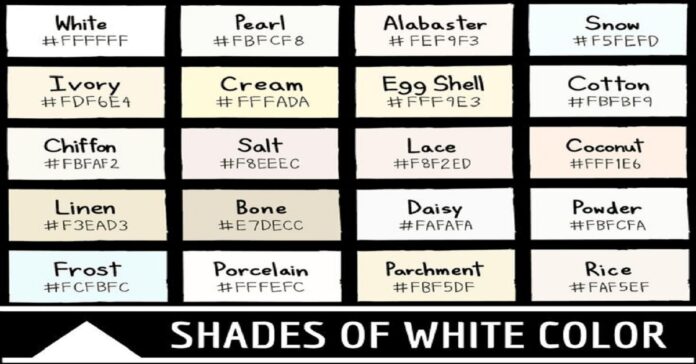In the ever-evolving realm of digital design, hexadecimal color codes serve as essential instruments, offering a standardized approach to representing colors. Anchored in the RGB (Red, Green, Blue) values, these codes play a pivotal role in attaining precision in color selection.
This introduction sets the stage for a closer examination of the significance of hex codes. An exploration of the nuanced spectrum of white shades. And an insightful exploration of their diverse applications in design.
Understanding Hexadecimal Color Codes
The hexadecimal system, based on 16 digits (0-9 and A-F), serves as a universal language for expressing colors in the digital realm. Each color is assigned a unique hex code, a combination of three sets of two characters representing the RGB values. Hex codes of RGB colors offer a concise and universally understood method for specifying colors. Professionals across diverse industries, including web developers, graphic designers, and digital artists, leverage these codes to maintain consistent color representation across various platforms and devices.
White Hex Code Versatility
The white hex code proves remarkably versatile, seamlessly transitioning between digital and print designs. Moreover, Designers find it to be a reliable means of ensuring color consistency across diverse materials, whether presented on a screen or in a printed document. This adaptability allows the clean and classic aesthetics of white to effortlessly transcend from the digital realm to tangible print materials.
Additionally, The white hex code stands as a straightforward choice, contributing to designs that are both neat and timeless. Whether crafting a website or a physical document, the versatility of the white hex code guarantees a consistent and pleasing appearance across various platforms.
Common Color Names and Hex Codes
Understanding hex codes extends beyond the realm of white shades. Here are some color names and codes:
| Color Names | Hex Code |
|---|---|
| Alabaster | #EDEADE |
| Beige | #F5F5DC |
| Bone White | #F9F6EE |
| Cornsilk | #FFF8DC |
| Cream | #FFFDD0 |
| Eggshell | #F0EAD6 |
| Ivory | #FFFFF0 |
| Linen | #E9DCC9 |
| Navajo White | #FFDEAD |
| Off White | #FAF9F6 |
| Parchment | #FCF5E5 |
| Peach | #FFE5B4 |
| Pearl | #E2DFD2 |
| Seashell | #FFF5EE |
| Vanilla | #F3E5AB |
| White | #FFFFFF |
Are there Industry Standards for HEX Codes in Digital Design?
In digital design, while strict industry standards for hex codes may not exist, these codes are widely embraced as a common language for specifying colors. Despite the absence of rigid guidelines, the broad adoption of hex codes ensures interoperability and consistency across diverse digital design applications.
Designers and professionals commonly use hex codes for effective communication and implementation of color choices, fostering a shared understanding in the digital design community. This widespread acceptance contributes to a cohesive and standardized approach, facilitating seamless collaboration and ensuring a consistent visual experience in various digital projects.
The Impact of White Hex Code in Web Design
The hex code for white plays a pivotal role in shaping the user experience in web design. Moreover, Its contribution lies in creating a clean and open visual space that not only enhances readability. It also fosters a positive overall user experience.
By utilizing this hex code strategically, designers can establish a minimalist and inviting design aesthetic, reducing visual clutter. And allowing users to engage with content seamlessly. This choice of color promotes a sense of clarity, simplicity, and openness. All of which contribute to an enjoyable and user-friendly web interface.
Conclusion
In conclusion, the exploration of hex codes and shades of white reveals nuanced world of color representation in digital design. From the pristine purity of #FFFFFF to the warm subtleties of cream and off-white. Each shade contributes a unique character to a design.
Hex codes, with their precision and consistency, empower designers to elevate the visual impact of their projects and ensure a seamless user experience across diverse platforms. As professionals navigate the dynamic landscape of digital design, understanding and effectively utilizing hex codes. It emerges as essential skills for creating compelling and harmonious visual experiences.




